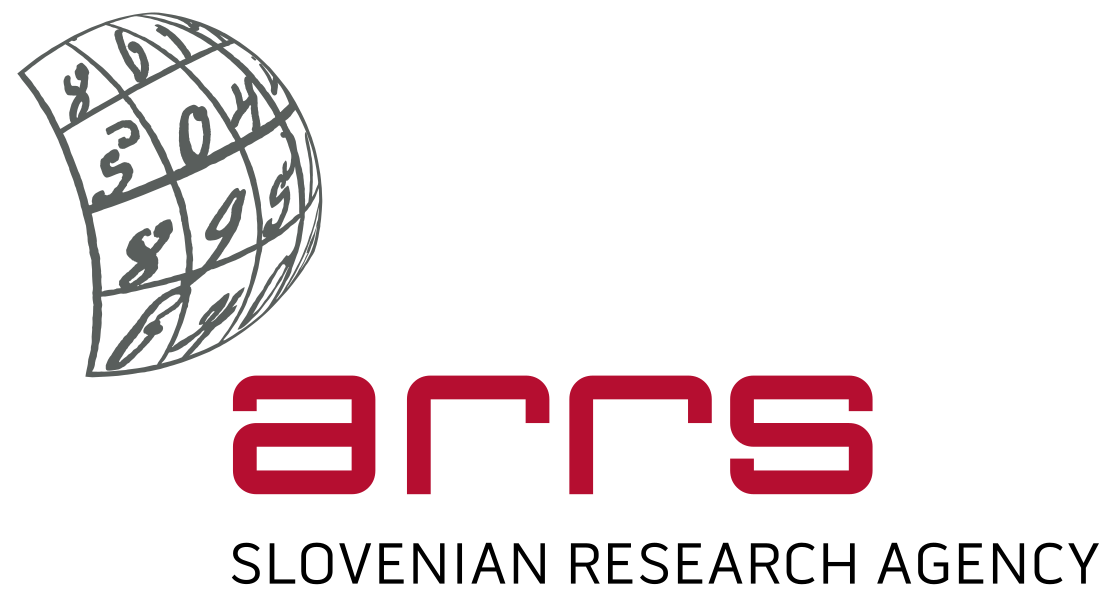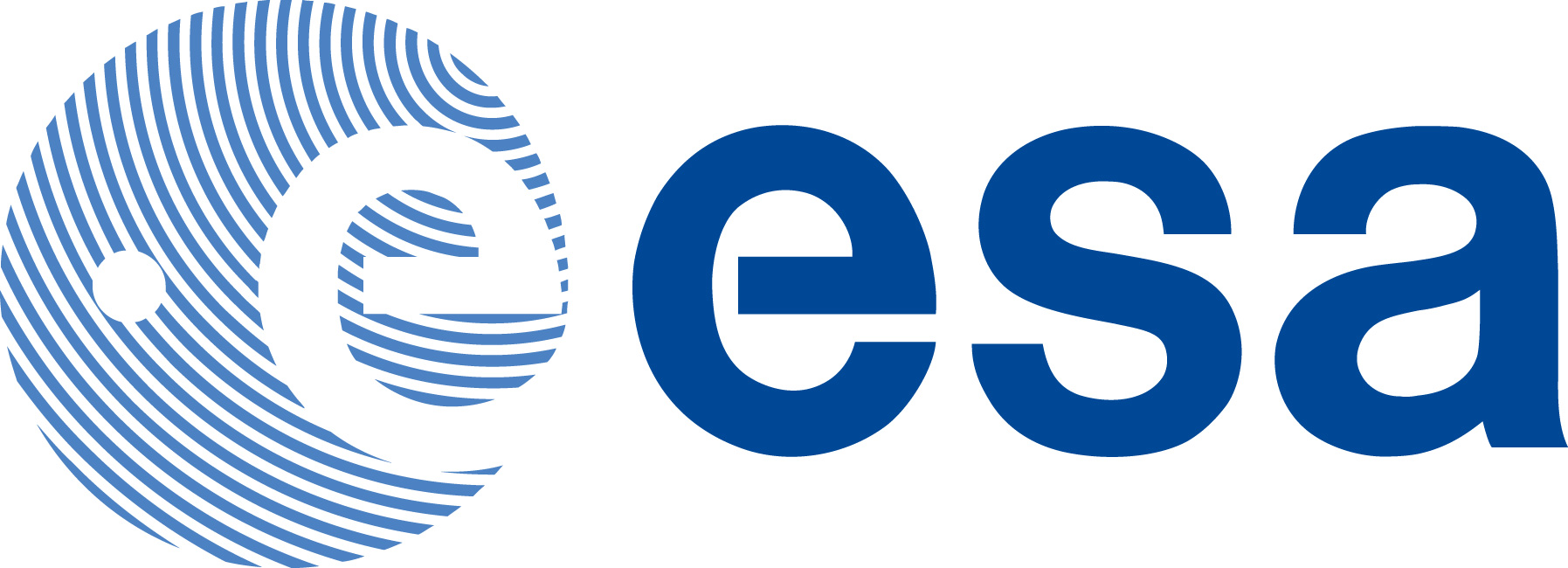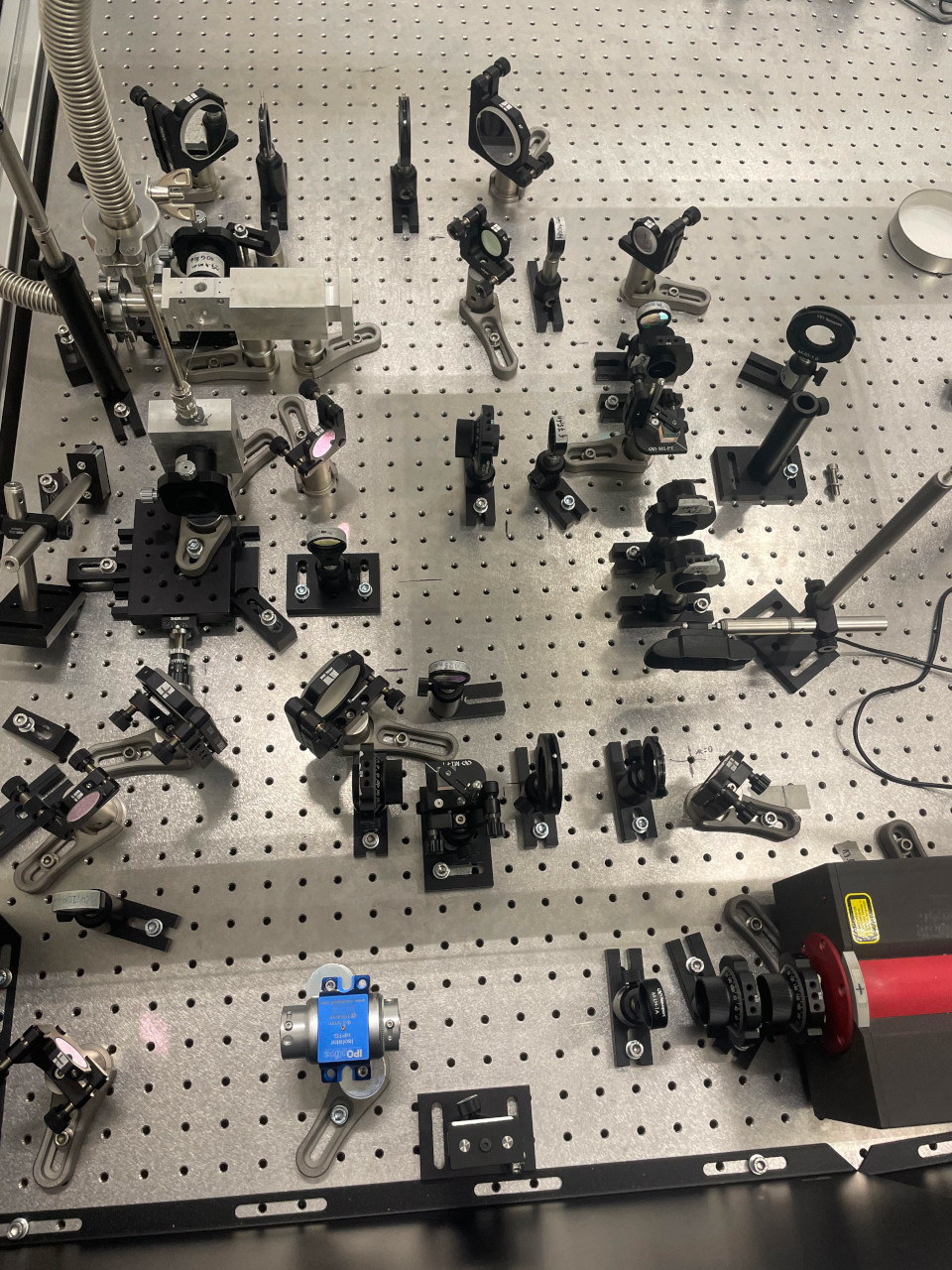Decoherence in free fall
Funding
We are very thankful for the main funding by the Slovenian Research Agency (ARRS, project number N1-0180), which covers personnel costs, material and equipment for this project. We are also thankful to the European Space Agency (ESA). The laser and central parts of the vacuum system were acquired around 2012 from ESA funds (contract no: 4000105799/127NL/Cbi).


Motivation and outline
This project was originally submitted as an ERC Consolidator Grant. While it was not funded by the ERC, it was later funded by ARRS in their ERC Complementary funding scheme. In the reduced scale of this fund, we are investigating the following topics:
- Loading dielectric test particles into optical traps in ultra-high vacuum (UHV)
- Optically trapping test particles and cooling their center-of-mass motion
These topics are to be addressed in two separate work packages – WP2 and WP3, respectively. The coordination of the project and the supervision of the students is performed in work package WP1.

The project started in 2021 and will run until 2024. In 2021, a former master student (Peter Marinko) worked on the initial setup that was meant for studying the optical trapping of dielectric test particles in low vacuum, and to then guide the particles through a hollow-core photonic-crystal fiber (HCPCF) into another optical trap in a second vacuum chamber.
In principle, this allows to trap test particles in low vacuum by simply evaporating a liquid containing the test particles and then sucking the particles into the vacuum chamber. At pressures above 1mbar, it is then easy to optically trap the particles. The goal then is to confirm that one has trapped exactly one test particle, and to then guide that particle through an HCPCF into a second chamber that has not been contaminated by the liquid containing the test particles, and this second chamber can be at significantly higher vacuum levels.
Properly preparing the HCPCFs has proved to be a tricky business where we benefited from the experience of Maxime Debiossac, who had worked with this technique in the past during his time in the Aspelmeyer group and the Kiesel group. The technique of using HCPCFs for guiding test particles was pioneered by David Grass in those two research groups while Rainer was also a member of the Aspelmeyer group.
Project team
- Rainer Kaltenbaek – principal investigator.
project lead, scientific and technical coordination, supervision of the students and the research team, acquisition etc. - Žiga Pušavec – PhD student
contributions to setting up the experiment, optimizing the beam propagation, setting up an optical microscope for inspecting the HCPCFs, technical instruction of master students - Guri Buza – student worker
setting up the Faraday isolator to allow higher beam powers, re-evaluation of the Gaussian beam propagation, optimization of the optical setup to couple light into the HCPCF from both ends in the two vacuum chambers, setting up an optical microscope for inspecting the HCPCFs after the cleave - Peter Marinko – former master student
design of the vacuum chambers, preparation of HCPCFs (cleaving them, gluing them into the two vacuum chambers), initial optical setup for coupling light into the HCPCFs - Maxime Debiossac – former postdoctoral researcher in the Viennese part of the group
initial instructions of the research team on how to handle HCPCFs, and how to optimally couple light into them
Detailed description and project status
IN PREPARATION
Related publications
Guiding dielectric test particles, cooling their center-of-mass motion and optically trapping them in UHV is a key technology that we need to develop and mature on the way to more ambitious experiments in the future. For example, this has been a central challenge addressed in the research campaign proposed to NASA in late 2021 – the publication can be found here (COBIS.SI-ID: 130283523).
A key motivation for performing experiments with optically trapped test particles and to control their center-of-mass motion is to test the predictions of quantum physics with increasingly massive objects. The feasibility of achieving meaning full results by simply observing the evolution of massive particles in free fall is described in this paper (COBIS.SI-ID: 97064195). In another paper that you can find here, we analyzed whether we can perform such tests using matter-wave interferometry in free fall (COBIS.SI-ID: 71453699).
Performing such fundamental tests is one of the central motivations to perform quantum experiments in space. When the European Space Agency (ESA) was looking for ideas for future missions to fly in the next decades, we submitted a white paper describing the intriguing opportunities offered by quantum technologies for future experiments in space. We later published that white paper here. (COBIS.SI-ID: 71446019). In a separate paper, we reviewed the potential of quantum technologies for future applications in space. This was a large effort of the community me and colleagues formed in the course of a COST action (COBIS.SI-ID: 92467459).
Bibliographic data
- Research campaign: macroscopic quantum resonators (MAQRO)
R. Kaltenbaek, M. Arndt, M. Aspelmeyer et al.
Quantum Sci. Technol. 8 014006 (2023) - Feasibility considerations for free-fall tests of gravitational decoherence
R. Kaltenbaek
AVS Quantum Sci. 4, 015604 (2022). - Quantum Physics in Space
A. Belenchia, M. Carlesso, Ö. Bayraktar et al.
Phys. Rep. 951, 1-70 (2022) - Quantum technologies in Space
R. Kaltenbaek, A. Acin, L. Bacsardi et al.
Exp. Astron. 51, 1677–1694 (2021) - Testing the foundations of quantum physics in space interferometric and non-interferometric tests with Large Particles
G. Gasbarri, A. Belenchia, M. Carlesso et al.
Commun. Phys. 4, 155 (2021)